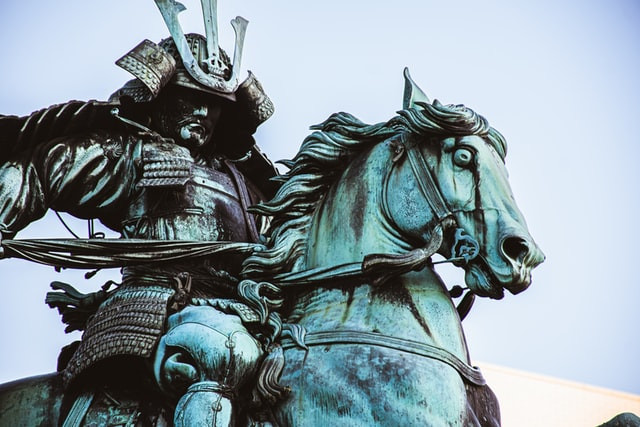Maps are an essential item when travelling in another country or just going about your day. Understanding the layout of Japan geographically will help plan out the best trip or figure out where you might want to live. Find the best kind of map for you when journeying across Japan.
Table of Contents
- Navigating the World Map: Japan, the Land of the Rising Sun
- A Closer Look at Japan - Regions & Prefectures
- The Different Maps for Navigating Japan
- Summary
Navigating the World Map: Japan, the Land of the Rising Sun
Everyone knows that Japan is located within Asia, the largest continent in the whole world. Grab a globe or a map and pinpoint where Japan is. It’s somewhere right here. See it?

As an island country, Japan is surrounded by large bodies of water like the Sea of Japan on its Eastside, the East China Sea on its Southside, the Sea of Okhotsk in its North, and the Pacific Ocean on its Westside. Japan is located in the Eastern part of Asia with neighboring countries like Korea in the East, Taiwan in the South, and Russia up North.
Japan is made up of the following islands: Hokkaido, Honshu, Shikoku, Kyushu, and the Okinawa & Ryukyu Islands. Honshu is the largest of its islands and where the capital of Japan, Tokyo, is located.
※ Encyclopædia Britannica, Inc., "Japan" ※ Maps of World, "Japan Map"
The Geography of Japan

Japan is made up of 6,852 islands, making it an archipelago with a whopping land area of 377,975 square kilometers. Most of Japan receives plenty of rainfall which results in abundant forests growing over its wide-ranging mountains. Both warm currents in the South and cold currents of the North meet within Japan's bodies of water, which creates a moderate climate that varies throughout the islands, but most of the country experiences four seasons of spring, summer, fall, and winter.
Despite its blessings from nature, Japan experiences violent raging typhoons and frequent earthquakes brought by massive tectonic plates where Japan is situated and the numerous active volcanoes, which are why there are many onsen or hot springs in Japan. There aren't a lot of arable lands in Japan due to its unique topography, yet they manage to produce bountiful crops.
Despite their tumultuous life, Japan has managed to rise above its troubles on its own like the sun.
※ Maps of World, "Japan Map" ※ Statistics Bureau of Japan, "Statistical Handbook of Japan 2020," p.2-4
Writer's Pick
A Closer Look at Japan - Regions & Prefectures
Now that we've learned the distinct features of Japan let us have a closer look at its breakdown.
Introducing Japan's Regions and Prefectures

Japan is divided into eight regions: Tohoku, Kanto, Chubu, Kansai, Chugoku, Shikoku Kyushu, and Hokkaido, which counts as both region and prefecture, making it the largest prefecture among others. Each region has its own prefectures such as:
In the Tohoku Region, there are 6 prefectures namely, Aomori-ken with its blooming cherry blossoms, Iwata-ken which is second to the largest prefecture that made it suitable for farming, Miyagi-ken which is known for its beautiful trees and its history, Akita-ken with its historic samurai townhouses, Yamagata-ken with its amazing ski resorts, and Fukushima-ken which is well on its way to full recovery.
In the Kanto Region, there are seven prefectures, namely, Ibaraki-ken which is known for its nature parks, Tochigi-ken where history and onsen blend together, Gunma-ken which is known for its mountains and onsen, Saitama-ken where you can watch live sports in its large stadium, Chiba-ken which is famous for its Tokyo Disneyland, Kanagawa-ken which is known for its beaches, and Tokyo-to or Tokyo Metropolis the urban centre of Japan.
In the Chubu Region, there are nine prefectures, namely, Niigata-ken which has the largest of all rice yields in Japan, Toyama-ken with its winter wonderland, Ishikawa-ken known for its historical places, Fukui-ken where ancient fossils are abundant, Yamanashi-ken known for its unique view of Mt. Fuji, Nagano-ken known for its history and exotic nature, Gifu-ken where it is perfect for hiking, Shizuoka-ken where Mt. Fuji resides, and Aichi-ken which is the most populated prefecture with dogs even though the cities here are heavily industrialized.
In the Kansai Region where culture and history are most abundant, there are 7 prefectures namely, Mie-ken which is considered to be ancient, Shiga-ken with its well preserved history, Nara-ken where the very first Japanese capital was, Hyogo-ken that has Kobe which is one of the major cities in Kansai, and Wakayama-ken with its ancient sites along with Osaka-fu and Kyoto-fu which are considered as urban prefectures. There's also a popular saying in Japan where you ruin yourself for food in Osaka or ruin yourself for fashion in Kyoto.
In the Chugoku Region, there are five prefectures, namely, Tottori-ken, which has the lowest population among all of Japan most likely because of its vast sand dunes, Shimane-ken that offers peace and quiet, Okayama-ken known for its stunning landscape, Hiroshima-ken which was famous for its tragic fate, and Yamaguchi-ken known for its unique architectures.
In the Shikoku Region that is the smallest of all regions, there are four prefectures, namely, Tokushima-ken which is known for its unique festivals, Kagawa-ken which is smallest of all prefectures, Ehime-ken known for its legendary onsen where notable persons bathed, and Kochi-ken which is known for its ancient attractions.
In the Kyushu Region where temperatures are warmer, there are eight prefectures, namely, Fukuoka-ken, which is historically old yet its nightlife is alive, Saga-ken known for its primitive attractions, Nagasaki which has the most islands among others, Kumamoto-ken known for its dangerous but beautiful volcano, Oita-ken known for its unique relaxation services, Miyazaki-ken where myths and natural beauty unfolds, Kagoshima-ken known for its tropical climate, and the Okinawa Islands prefecture which is famous as the Hawaii of Japan.
All which sum up to a total of 47 prefectures with unique qualities and wonderful history.
Tourist Spots in Japan
There are a lot of special attractions and unique destinations in Japan, and saying "a lot" is an understatement. Don't worry though because we've narrowed down all the notable places that you must visit.
Starting from the north, you can visit:
- Akan Mashu National Park and the Daisetsuzan National Park in Hokkaido.
Notable places in Honshu are:
- Towada-Hachimantai National Park in Tohoku Region
- Nikko National Park in Tochigi Prefecture
- Mt. Fuji in Shizuoka and Yamanashi Prefecture
Notable places in Kansai Region are:
- Lake Biwa, the largest and oldest lake in Japan
- Kansai's Top 3 tourist destinations: Kyoto, Osaka, and Nara
Moving further south, you can visit the:
- Hiroshima of the Chugoku Region
- the 88 temples of the Shikoku Region
Just to name a select few.
The Different Maps for Navigating Japan

Navigating Japan through Google Maps
Google Maps is undoubtedly the easiest way to navigate in Japan, whether it is walking, driving, or public transportation. Using Google Maps, you can even find out which station exit you should take for nearest access to your destination as well as which train car to use to quickly reach your station exit. How convenient!
Of course you should take this with a little grain of salt as depending on your time of departure, there may be faster/cheaper/nearer to destination routes, so fiddle around with the settings and plan your schedule carefully.
Most of Japan has excellent mobile signals but beware that signals can be weak or non-existent in rural and mountainous areas. If you are planning to take a hike or explore the wilderness, consider getting a paper map or downloading an offline map beforehand as a precaution. If you are planning to rent a car, note that although most of them come with pre-installed GPS guidance, there is a chance it will be Japanese only so check before renting or rely on your own mobile.
Navigating Japan through Topographical Maps

Topographical maps may seem a bit tricky to use, but it is a hiker's and camper's best tool for navigating the wilderness. This is perfect for rural areas or places with less human population, like forests or mountains abundant in Japan.
The red areas on topographic maps indicate high elevation, while green and blue areas indicate low elevation. While it may seem a bit vague or not useful at all, it will help you navigate yourself within the terrain and avoid areas with a point of depression that may indicate volcanoes, craters, or sinkholes that you don't want to encounter.
The Geospatial Information Authority of Japan’s site features 3D rendering of different Japanese terrains and bodies of water, making it easier to visualize the map, especially if you lack imagination. Just visit their official website here for their collection of 3D Topographical maps in Japan. Japan's GSI also offers government issued maps that could help you navigate around isolated areas in Japan that you simply cannot find by searching online.
Navigating Japan through Tourist Maps

Tourist maps are basically political maps that highlight the popular attractions and destinations within each area. These are usually offered in pamphlets or in notice boards as a promotion of a particular place. Take this sample course of Shikoku Pilgrimage that has detailed instructions and information on how to get from one temple to another. Another fine example is Aomori-ken’s Hirosaki City’s
Apple Tour Map and Apple Pie Map.
Tourist maps may probably be the most basic yet essential map you'll need. These are readily available at tourist information centres, main train stations, and even hotels at your travel destination. Thanks to the years of tourist visitation, maps are usually available in several foreign languages like Chinese, Korean, English, and more.
Summary

Maps have been a vital part of our lives since time immemorial and have become even more so now that international travel is a norm. And of course it’s the same in Japan, whether you’re visiting for the first time or you live here. We hope this article gave you a crash course in Japan’s geography as well as different map options to explore.




































